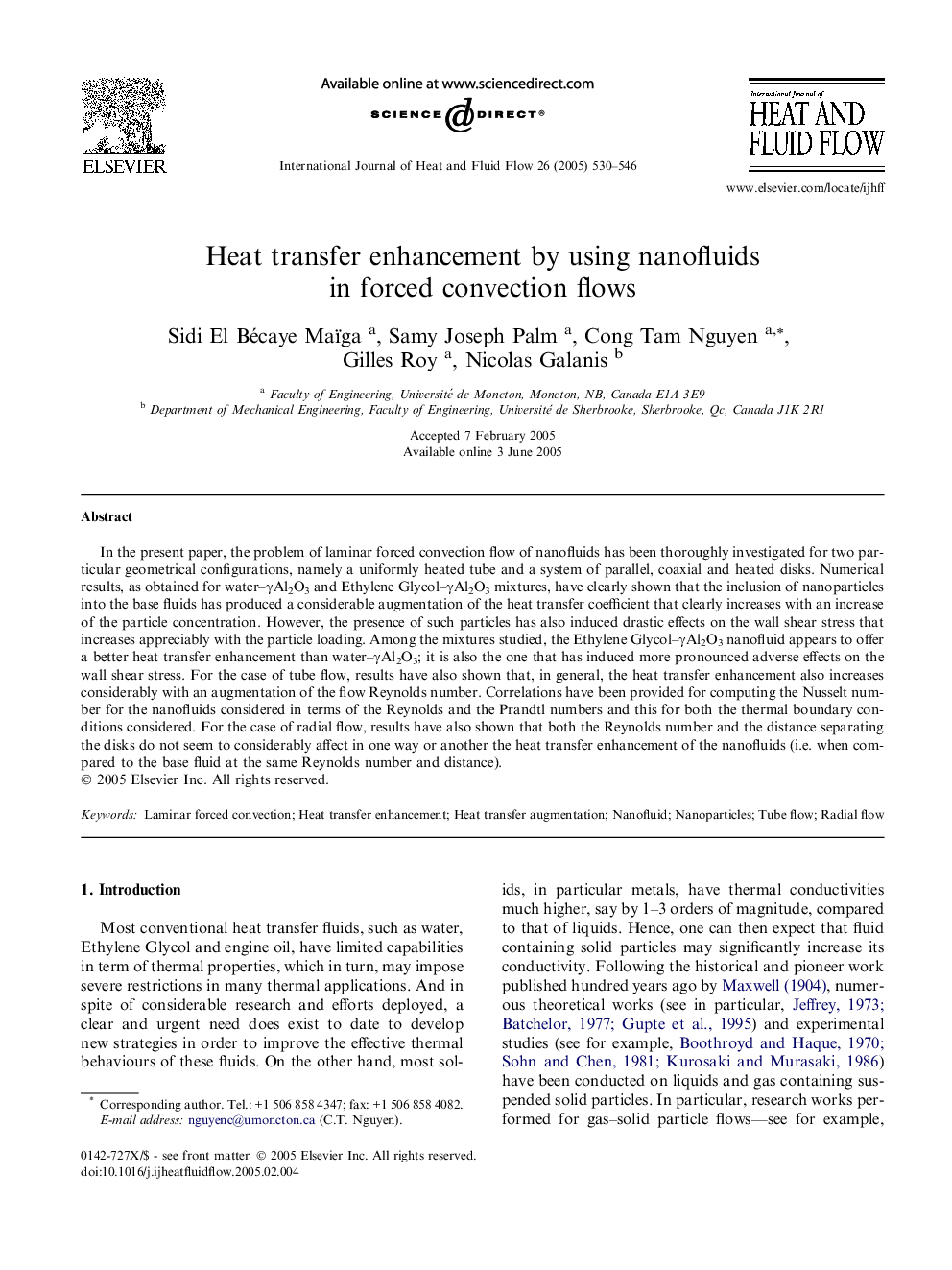| Article ID | Journal | Published Year | Pages | File Type |
|---|---|---|---|---|
| 9691117 | International Journal of Heat and Fluid Flow | 2005 | 17 Pages |
Abstract
In the present paper, the problem of laminar forced convection flow of nanofluids has been thoroughly investigated for two particular geometrical configurations, namely a uniformly heated tube and a system of parallel, coaxial and heated disks. Numerical results, as obtained for water-γAl2O3 and Ethylene Glycol-γAl2O3 mixtures, have clearly shown that the inclusion of nanoparticles into the base fluids has produced a considerable augmentation of the heat transfer coefficient that clearly increases with an increase of the particle concentration. However, the presence of such particles has also induced drastic effects on the wall shear stress that increases appreciably with the particle loading. Among the mixtures studied, the Ethylene Glycol-γAl2O3 nanofluid appears to offer a better heat transfer enhancement than water-γAl2O3; it is also the one that has induced more pronounced adverse effects on the wall shear stress. For the case of tube flow, results have also shown that, in general, the heat transfer enhancement also increases considerably with an augmentation of the flow Reynolds number. Correlations have been provided for computing the Nusselt number for the nanofluids considered in terms of the Reynolds and the Prandtl numbers and this for both the thermal boundary conditions considered. For the case of radial flow, results have also shown that both the Reynolds number and the distance separating the disks do not seem to considerably affect in one way or another the heat transfer enhancement of the nanofluids (i.e. when compared to the base fluid at the same Reynolds number and distance).
Keywords
Related Topics
Physical Sciences and Engineering
Chemical Engineering
Fluid Flow and Transfer Processes
Authors
Sidi El Bécaye Maïga, Samy Joseph Palm, Cong Tam Nguyen, Gilles Roy, Nicolas Galanis,
